It’s done.
After dreaming about your book for years, you finally sat down and wrote it.
Your plot is everything you wanted, and the story itself is a literary gold mine. But what’s next?
Thirty years ago, there was a simple answer to that question—you sent your manuscript to an agent or publishing company and crossed your fingers.
Today, traditional publishing isn’t the only kid on the block.
Make no mistake, traditional publishing still exists, but if you want to bypass all the waiting—and the lower profit margins if your book is accepted—you can self-publish.
But is self-publishing really everything it’s cracked up to be? Which method of publishing is the best way to get your future best seller into the hands of dedicated readers?
In this post, we’ll walk you through what self-publishing and traditional publishing are, the pros and cons of each, and, ultimately, what the best option is for you.
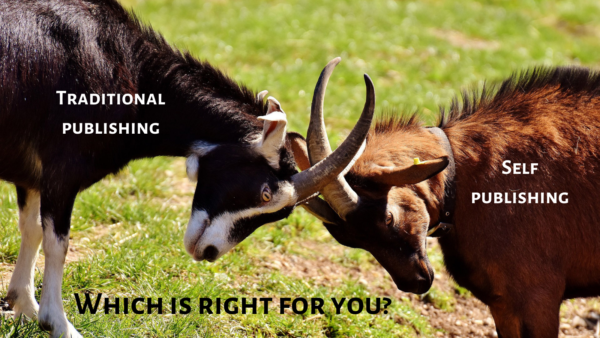
What is self-publishing?
Self-publishing is when you (the author) bear the full responsibility and expense of editing, publishing, and marketing your book. Authors who self-publish use programs such as Kindle Direct Publishing or Smashwords to publish their manuscripts and get them out to the public.
Related: Publishing tips for indie authors
Self-publishers don’t have to deal with lengthy querying processes, painful rejection letters, or large commission fees. But they do need to handle all their own marketing, hire editors, book formatters, cover designers, and build their own audience.
What are the pros of self-publishing?
Pro #1: You work according to your own timeline
Instead of waiting weeks, months, or even years for an agent or publishing company to accept your manuscript, self-publishing lets you immediately dive into the editing, publishing, and marketing process.
If you’re very eager to get your story out there, you can design your own cover and get the novel live on the major platforms in a day or less.
Alternatively, you can take your time working with an editor, promoting your book before its release, and finding the perfect designer for your cover. With self-publishing, you get to set your own deadlines, and you can extend them as you see fit.
Pro #2: You guarantee the publication of your book
When you go through traditional publishing, there are no guarantees.
You could submit your manuscript to a hundred different literary agents or publishing houses and still get rejected every time. In the end, traditional publishing could sequester your book instead of putting it in the hands of thousands.
Or…
You can publish the damn thing yourself—and to hell with the naysayers and the gatekeepers. Self-publishing puts your book out there and lets it live or die by its own merit. You don’t need anyone else’s permission to share your story with the world, and if it is successful, you’ll have your pick from the flood of traditional publishers who, upon learning the error of their ways, will break down your door with pens and contracts wet with ink.
Sure, a traditional publisher will help you market your book to a wide audience in ways you couldn’t alone, but publishing directly to Amazon or Barnes and Noble’s e-book marketplaces will still get your novel in front of a lot of eyeballs.
Pro #3: Self-published books can be wildly successful
The Martian, written by Andy Weir, was originally a self-published e-book on Amazon. It went from being a $0.99 e-book to getting picked up by Crown Publishing, becoming a New York Times Best Seller, and earning the honor of being the highest-grossing blockbuster from Fox in 2015.
E.L. James’s 50 Shades of Gray, a notorious and much-loved erotic romance novel, was originally a self-published piece of Twilight fanfiction. Eventually, the author eliminated the Twilight references and made it available on her website chapter by chapter for free. It, too, was found by a publishing company, turned into a New York Times Best Seller, and transformed into a hit movie.
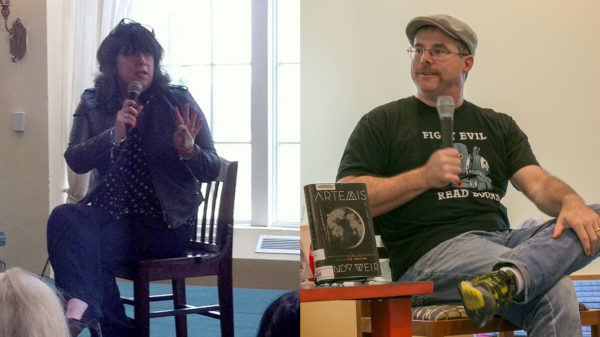
And these two books aren’t the only examples: The Shack by William P. Young, Eragon by Christopher Paolini, and No Thanks by E. E. Cummings were all originally self-published before becoming massive successes.
Of course, you might not achieve the same level of success as The Shack or 50 Shades of Gray (especially not on your first try!) but one thing’s for sure: All these authors proved that self-publishing can help you build a faithful audience.
Pro #4: Higher profit margins
When you self-publish, the profits are split two ways—between you and the platform you’re selling on.
Many self-publishers go through Amazon (Kindle Direct Publishing)—in fact, Amazon owns 72 percent of the online retail book market, which includes both digital and printed books. Amazon also generates 80 percent of all online book sales.
Amazon offers book royalties of 35 to 70 percent. For example, if you sold your novel for $10 on Amazon, you’d be earning $3.50 to $7.50 per sale.
When an author goes through a traditional publisher, however, the profit for the book is split between the author, the publishing company, the literary agent, and the platform that sells the book.
Traditional publishing companies typically offer 6 to 25 percent of profit (with an average of 10 percent) earned on the book. You may sell more books, but you’ll likely receive lower revenue on each book sold.
Pro #5: It’s easier than ever before
Though self-publishing is as simple as uploading your book and clicking Publish, it does take more effort than that if you want to be successful.
This is a pro and a con—while it takes hard work to get your book ready for its self-publishing debut, it’s easier than ever to take on this challenge yourself, with help from platforms and agencies whose sole purpose is to ensure self-published books hit professional standards.
What do you need to do to self-publish?
If you’re ready to take publishing your book into your own hands, there are a few things you need to do before you can release your first novel on Amazon:
Book editing
To get your book ready for its debut and ensure it is at professional standards (grammatically correct, free of typos, with a cohesive plot and correct syntax), you will need to hire a book editor. Fortunately, there are many professional editors available for hire online.
But how do you choose which one? We’ve put together a quick guide on how to find a book editor for your novel. (You can also submit your manuscript to us, and we’ll provide you with a free sample edit along with a price quote and estimated turnaround time.)
Publishing
Kindle Direct Publishing, which now encompasses CreateSpace, allows you to create both print books and e-books through Amazon. You can also use the platform’s cover-design templates and book promotion services. The site even provides a step-by-step guide to publishing on Amazon.
Kindle Direct Publishing also offers great programs for new authors, such as KDP Select. This service makes your book part of the Kindle Lending Library and Kindle Unlimited, services that help readers discover new authors more easily.
KDP Select even helps with marketing. They promote books through discounts and countdown deals. This service does require ninety days of exclusive rights to Amazon, but if you find success in KDP Select, you can re-enroll your book as many times as you want.
Amazon’s CreateSpace makes physical book publishing stress-free. It is print-on-demand, which means you can sell as many or as few copies as you want.
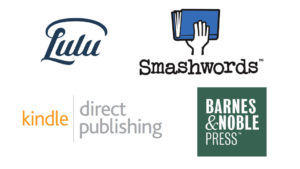
If you choose to go with a service other than Amazon, there are multiple self-publishing companies available:
- Lulu—One of the oldest online self-publishing companies around, Lulu retails books through their own bookstore and distributes them to other online stores (including Amazon) and book distributors (Barnes & Noble and Ingram). Lulu also offers both hardcover and paperback formats for print books.
- Smashwords—Similar to Amazon, you can upload your own novel, with your custom-made book cover, right to the Smashwords platform for direct sale.
- Barnes & Noble Press—Formerly known as NOOK Press, Barnes & Noble’s self-publishing platform offers print-on-demand publishing. But if you self-publish with them, your work will be restricted to their own e-book devices and physical bookstores.
Book design
Don’t like the templates of covers made by your self-publishing company? Want to hire someone else to make the absolutely perfect cover for your book? There are plenty of online book cover designers to choose from.
One of the top names in book cover designs right now is Damonza. They have been vetted by hundreds of authors, and their gorgeous covers speak for themselves.
If, however, you want to hire a freelancer to design your book cover, here is a great article by TCK Publishing to help you figure out how much you should pay and how to find a freelance book cover designer.
Book Marketing
Once your book is on the platforms of your choice, you’ll need to shift your focus to getting it sold. There are many independent book promoters out there who will help you get your book in front of the right people, but this is another cost you’ll have to cover out of pocket if you’re self-publishing.
You can also do some marketing on your own—virtual book tours, social media, and reader exchange programs are all popular options, but they do take time and effort.
Pro #6: Creative Freedom
Perhaps the most enticing aspect of self-publishing is creative freedom.
You get to decide what is included in your book.
You get to decide what types of edits you make to your novel.
You determine exactly what you want your book to look like.
This kind of creative freedom does not exist when going the traditional route. Your agent or publisher will have demands about how you edit your novel, what the cover looks like, and how you market it, and that can be very difficult for some authors.
What are the cons of self-publishing?
Con #1: You are responsible for everything
Since you are the sole person in charge of producing your book, you will have to spend a lot of time and effort on things you may not find interesting.
To be truly successful, you’ll have to either learn a lot about marketing and design or hire someone else to help you.
For some authors, this is an exciting opportunity to expand their skills while maintaining control over their work. For others, the long list of tasks required to self-publish saps the joy out of the writing experience, and may end up preventing them from ever publishing at all.
Related: 5 useless fears all writers should dismiss
Con #2: High up-front costs
Even though your profit margin is higher as a self-publisher, getting your book to professional standards can become expensive quickly.
You will need to make a budget for editing, cover design, and marketing.
If your book is 55,000 words (the standard word count on a teen novel—an average word count for an adult novel is 90,000), you can end up with a budget that looks like this:
Book Cover: $100 to $200
Developmental Editing: $800 – $1,200
Line Editing: $1,500 – $2,000
Proofreading: $600-$800
For marketing, Amazon has a minimum daily budget for Amazon Sponsored Ads of $5.00 per day ($155 a month) even if you do not make any sales.
Of course, you can look for ways to skip or save on some of these services. For example, you may want to find alternative, more affordable ways to market your novel (a virtual book tour) or create a book cover (Canva or Photoshop).
This can help you save on the investment needed to self-publish, but remember that readers want a professionally edited book with a well-designed cover. Cutting costs at the start could impact your sales later.
Con #3: Your audience will be limited
With a traditional publisher, you’ll have immediate access to an audience. Publishers have relationships with book sellers who will stock your novel. With self-publishing, you’ll need to build your own audience.
Most sellers won’t stock physical copies of self-published books, and popular book publications are not likely to promote them, so you will need to create your audience using clever book marketing strategies.
Although this can be challenging, services like KDP Select and Goodreads are available to help you find and connect with readers.
What is traditional publishing?
Traditional publishing means submitting your book to a literary agent or publishing company, who will then bear most of the responsibility for editing, marketing, and distributing your book.
Though traditional publishing comes with a wider audience for your book, you must share the control, rights, and financial profit of the book with the publisher.
It’s also important to note that traditional publishing is extremely competitive, and many authors never receive an acceptance for the manuscript, even after months of waiting.
What are the pros of traditional publishing?
Pro #1: Money up front
Unlike self-publishing, you do not bear the financial responsibility of getting your book to professional standards and producing/distributing your book.
So if you’re tight on cash, getting a traditional publishing deal can be very helpful, as most publishing companies will pay authors an advanced royalty, and your up-front costs of producing the book (editing, marketing, design, and distribution) are all covered by the publishing company.
Note: There are some costs involved in the querying process, as many publishers charge a fee for submission (not to mention printing and mailing costs if they don’t accept electronic submissions).
Pro #2: Production help
Instead of you captaining the production of your book alone, a publishing company will provide a team to assist you. This team helps eliminate some of the early stress of ensuring your book meets professional standards.
They will edit your manuscript multiple times. They will design the best possible aesthetic for your book cover and layout. They will help you publish and market your book (often as an e-book and audiobook), then distribute it to various sellers, which lets you focus on the sole reason you became an author: writing.
Pro #3: Street cred
If the publishing company accepts your manuscript, it’ll put its fancy logo on the spine and title page of your book.
But why does that matter?
The symbol is the golden ticket to being sold at major book sellers. In fact, most well-known book vendors won’t even sell a book unless it is backed by a publishing company.
It also creates brand reliability—it lets your future readers know that this book was good enough to be picked over thousands of others by industry experts.
This doesn’t mean that only the best books get picked up by publishers. Traditional publishing involves a lot of luck—there are plenty of famous authors who were rejected time and time again before finally landing on the right publisher’s desk. Many of the best books out there may still be sitting on their authors’ computers, untouched, because their writers grew tired of reaching out to agents and publishers.
What are the cons of traditional publishing?
Con #1: Lots and lots and lots of waiting
Unlike self-publishing, where you work on your own schedule and at your own pace, traditional publishing leaves you at the mercy of others.
To begin, you will need to wait for a literary agent to agree to take you on as a client. They receive thousands of interested clients annually, so it can take months or even years to be accepted.

You’ll also need to grow a thick skin, as you will almost certainly receive multiple rejections. Before she published Little Women, Louisa May Alcott received a rejection letter from a publisher who stated quite plainly, “You can’t write.” Fortunately, most rejections aren’t as personal as that, but you’ll still need to get used to hearing the words not interested.
If and when your book is accepted by a literary agent, you are looking at about a two-year process before it will hit shelves. You have to wait to receive a contract, agree to it, sign it, deliver your manuscript, work on edits and revisions, and wait on the design team to create a proper cover and layout.
In short, self-publishing is often faster than traditional publishing because the author is in control. But we still recommend taking advantage of having complete control and spending as much time as you need working with editors and book cover designers on making the best edition of your novel possible.
Con #2: Limited creative freedom
Just because you are the author doesn’t mean you get a complete say in what is or is not included in your book.
When you sign your contract with a publishing company, you give them the right to help adjust the contents of your novel. They may tell you to lose a certain subplot, change things about the characters, remove entire sections of the novel, or write in plot twists and turns you hadn’t planned on.
Though you can negotiate with them on some of these changes, it’s not uncommon for publishers or agents to set ultimatums—if you refuse to make a change they request, you could lose your contract entirely.
Con #3: Smaller profit margins
All the wonderful help you received getting your book to a professional standard doesn’t come for free.
Any profit you receive on your book will be split among you, your agent, your publishing company, and the bookseller.
So instead of profit margins of 35 to 70 percent (the standard e-book profit margin through Kindle Direct Publishing on Amazon), you will receive a profit margin somewhere between 6 to 25 percent.
If your book becomes a massive best seller, this may not be a big deal. However, if sales are on the conservative side, you may find yourself pining after that greater royalty share you could get from Amazon or other online platforms.
Should I self-publishing or traditional publish?
So which is better, self-publishing or traditional publishing?
Ultimately, it all depends on what works best for you.
If you enjoy setting your own schedule and having complete control, higher profit margins, and full creative freedom, then self-publishing is probably your best course of action.
If, however, you became an author to write; if you have no interest in things like marketing, design, and publication; if you don’t mind sharing responsibility and creative control, then traditional publishing is the path for you.
You can also choose to do a combination of these two processes. You can start out reaching out to traditional publishers, and if you grow weary of waiting or can’t find the right fit, there’s nothing to stop you from taking the self-publishing route later on.
The book is yours, and so, too, is the decision of how you publish your book.
Which will you choose?
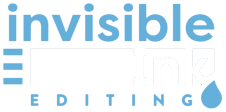


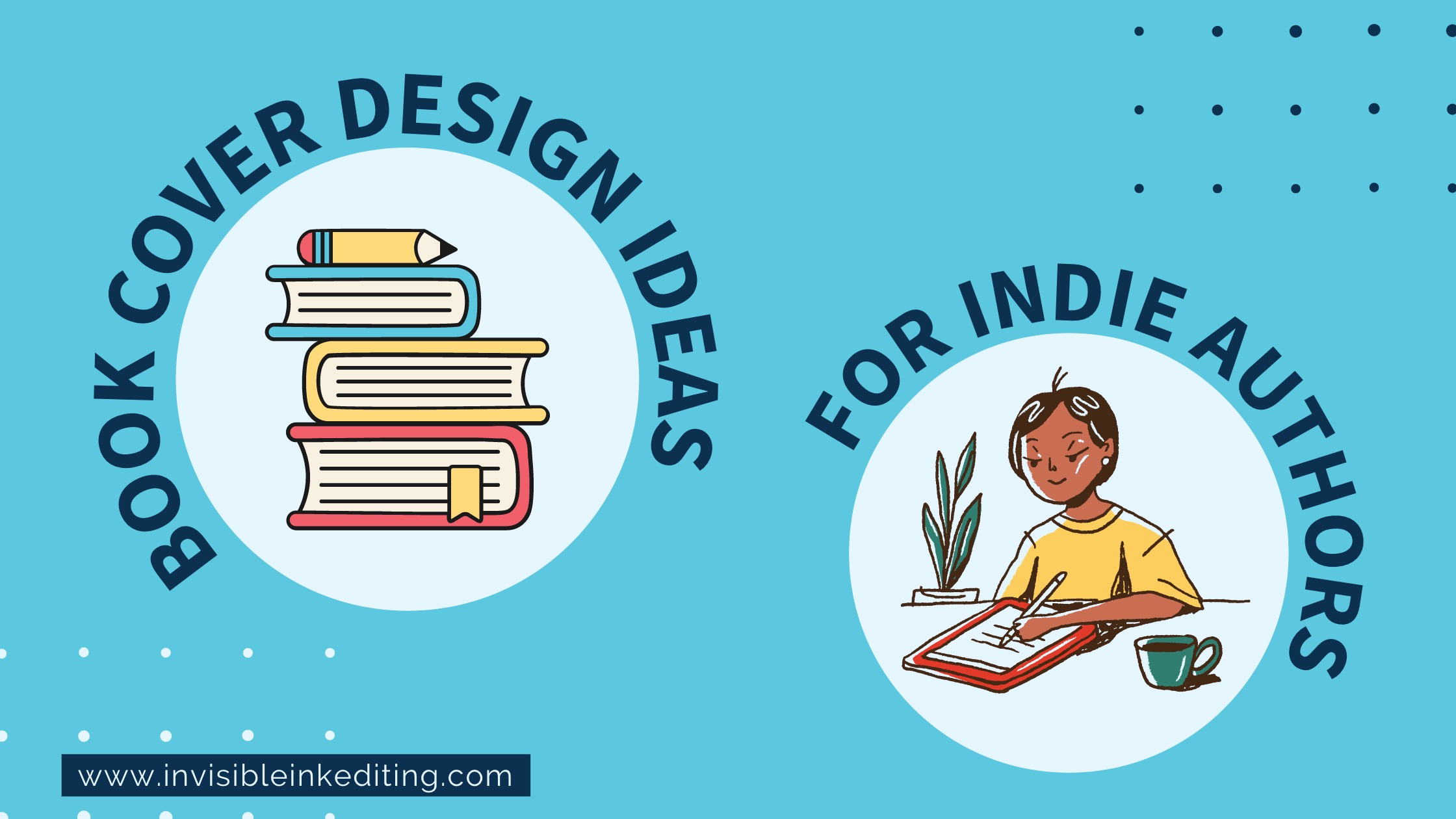
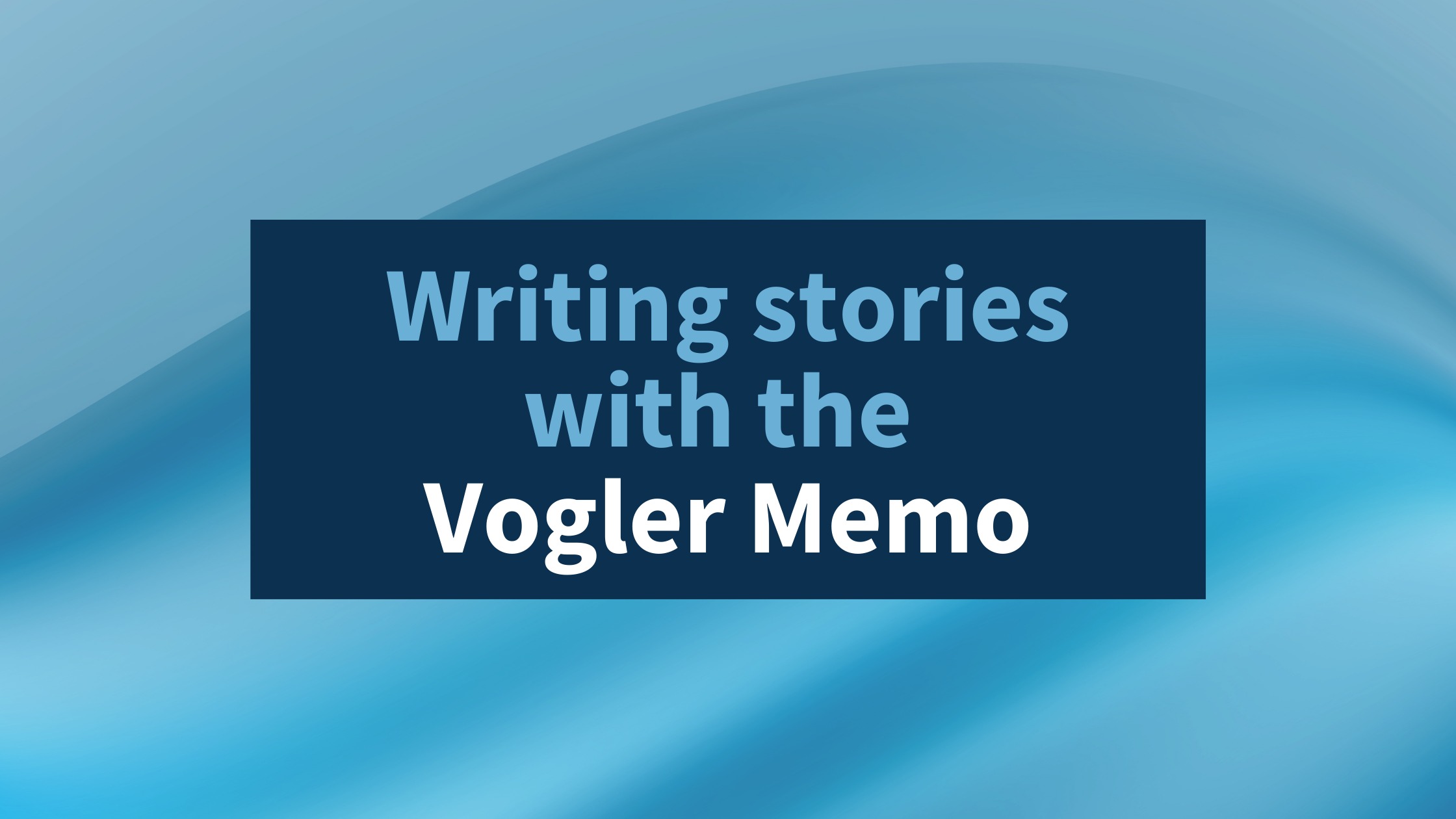
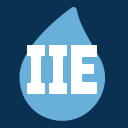
3 replies on “Self-Publishing vs. Traditional Publishing: Which Is Right for You? You wrote a book... Now what?”
I have been in search of this comparison for a while and I am glad that I finally come across the great resource. Cheers!!
Valuable guidance for would be Authors.
I am convinced that with the help of self-publishing I can write and publish my own book very easily. Also, I will get better margins than what I will get in traditional publishing. I really like the way in which you have explained the advantages of self-publishing in this article. Thank you.